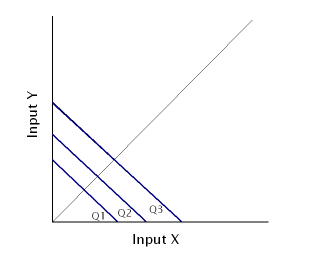Interpreting IQ Value
- msaakshi22
- Jan 28, 2021
- 3 min read
What isoquant is often the first thing to come to mind when considering an economic model of any sort? In economic this terminology is simply defined as a situation where the output of any economic activity is greater than the input or output of that activity. In microeconomics, it is when there is such a direct relationship between input and output that it is difficult to distinguish between them. For instance, if I am choosing the amount of fuel I am going to use for my car then there is no reason to suppose that I am actually choosing a good amount of fuel because the amount of fuel available to me at the moment is more than the amount I will actually use. Isoquant occurs frequently in situations where some kind of external constraint prevents the situation from arising naturally.
It occurs frequently in the natural sciences because one of the inputs required for the chemical reactions in question is water. In fact, the chemical reactivity constant K(n) is such that any change in water density by itself will cause the changes in the other components that are required to induce the reactions without requiring further input. If we set the initial conditions at initial values of input and output and just let K(n) run for some time, eventually we will reach a point where the equilibrium condition is found, i.e. there is some way in which all the possible combinations of inputs and their effects can be obtained without resorting to any sort of external influence.

The point at which an isoquant exists is typically called the critical point. The reason why it exists is that for any process to be completed sufficiently to meet its output at a lower cost, there must be some way for the inputs to be mixed randomly so that their sum is less than the cost of production. So, for example, if I were to produce rubber gloves from rubber fibres, I would need to find some way of mixing the fibres of rubber with those of another material so that the product would have more of a homogenous appearance and would therefore be cheaper. Obviously, if we continue to mix and blend the materials, we will not reduce the costs of manufacturing but, as previously stated, we may well end up with some its products that are indistinguishable from those which do not contain isoquant.
One of the prime examples of such is the case where we are manufacturing shoes from rubber compounds and need to cross it (critical point e) which is where the rubber starts to coagulate (i.e. harden). When we cross this point on, the price of the rubber starts to rise and the quality of the product starts to decline. When we return to our drawing table and remove it we find that we have a product with two different qualities; one of them better than the other. In the case of the cross over of the critical point e, we now have two it's and one is the critical point, which is the point at which all the rubber is changed into isoquant.
In the above example, what we find is that two isoquants have been produced in the process. One is of lower quality and the other is of a higher level, which impairs the life of the lower quality rubber but increases the life of the higher level rubber. Now, what we do in this situation is to introduce the concept of intersecting. We use this concept in all types of industries, wherein certain circumstances, we need to introduce the concept of intersecting so that the costs of
production are driven down and the product is of higher quality and this would be reflected in lower prices and better quality.
The intersection of its and isocosts is also used in engineering when we are designing for the Interpreting isoquant diagram. The concept of the intersection of isoquant and isocosts is very similar to the above example and is used extensively in engineering design. In the design of isoquant or Intersecting its Diagram, it is not necessary that we introduce the concept of isoquant or intercrossing is that is sufficient. For example, the above diagram can also be produced if we use the concept of overlapping i.e. if we place two isoquants on top of one another and place one mesocolon on the other.
An MPL formula a part of the MRTS in economics, you can read about in detail on thekeepitsimple a blogging website for management students.
Comments